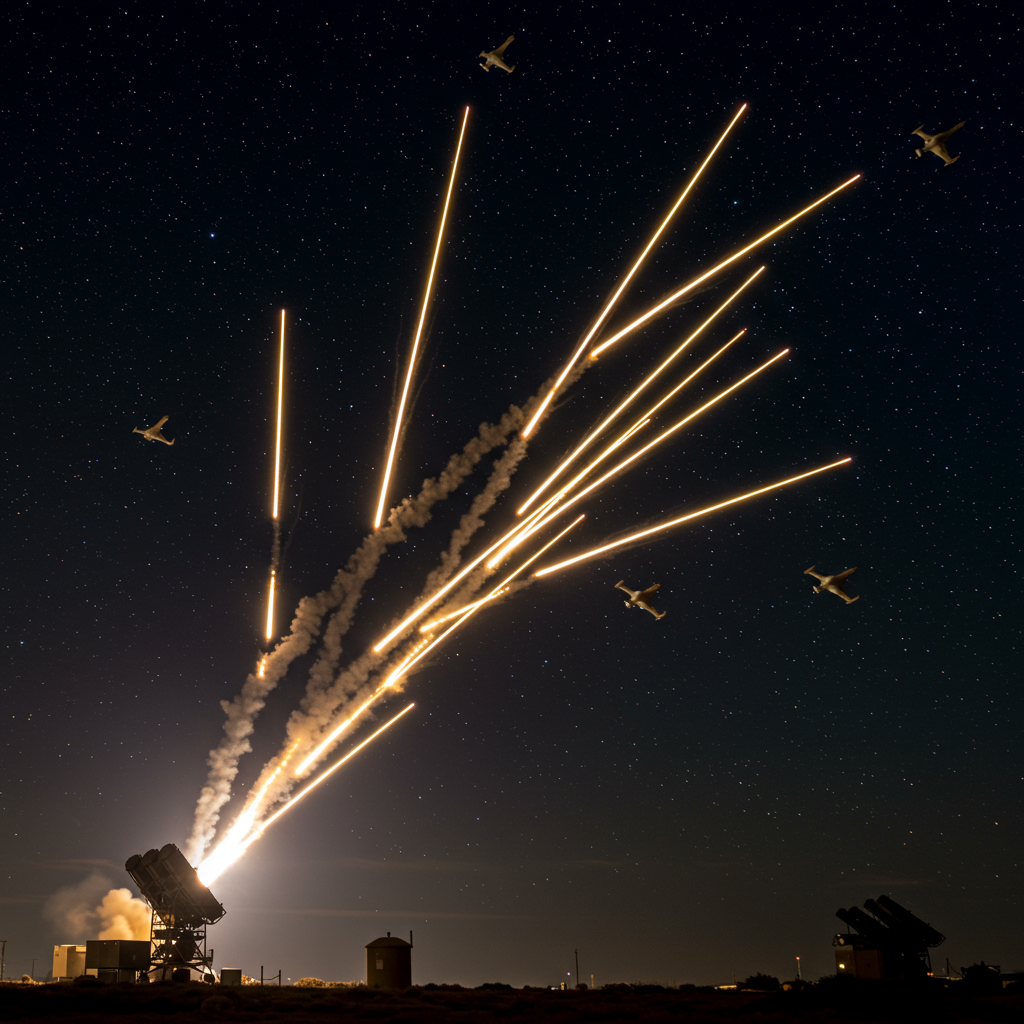Israel’s Air Defense vs. Iran: Can Defenses Endure the Barrage?
As the conflict between Israel and Iran intensifies into its second week, a critical military equation is shaping the duration and intensity of the war. At its heart is the stark imbalance between Iran’s significant arsenal of long-range missiles and drones and Israel’s limited supply of missile interceptors needed to shoot them down.
Following recent Israeli strikes, Iran launched a massive retaliatory barrage, including over 400 missiles and hundreds of drones. While Israel’s sophisticated air defense systems have achieved high interception rates, successfully downing the majority of incoming projectiles, the sheer volume of the attacks is placing immense strain on their resources.
Experts are voicing serious concerns about the sustainability of Israel’s defensive posture. Tom Karako, director of the Missile Defense Project at the Center for Strategic and International Studies, highlights the critical link between the available interceptor stock and the ability to defend against sustained attacks. He describes the potential scenario of Israel running out of interceptors as “a very bad situation.”
Israeli officials have understandably declined to disclose specific numbers of remaining interceptors, citing national security. The military maintains it is “prepared and ready to handle any scenario,” and Prime Minister Benjamin Netanyahu has acknowledged crucial U.S. air defense assistance, including THAAD missile defense systems and naval support.
The Strategic Dilemma: Rationing Defenses
Despite external aid, analysts warn that a prolonged conflict will inevitably push Israel towards rationing its defensive arsenal. Joe Truzman, a senior analyst at the Foundation for Defense of Democracies, suggests this could force agonizing choices, potentially requiring Israel to prioritize the defense of key military assets over civilian infrastructure. This grim reality means Israeli cities and towns could face unprecedented destruction if the barrage continues.
This potential strain on Israel’s defense is seen by some as a deliberate strategic objective for Iran. Truzman posits that Iran aims to reach this point to increase pressure on Israel and potentially deter its actions aimed at Iran’s nuclear infrastructure.
Iran’s Offensive Capabilities: Missiles and Launchers
The other side of this critical equation is Iran’s capacity to launch attacks. While reliable estimates of Iran’s long-range missile stockpile are scarce, experts believe Iran may have expended between a third and a half of its supply over the past 14 months of intermittent conflict. Israel also claims to have destroyed several Iranian munitions caches recently.
However, perhaps more crucial than the number of missiles is the number of missile launchers Iran possesses. These have become a key target for Israeli strikes. Prime Minister Netanyahu claims Israel has disabled over half of Iran’s launchers. Fabian Hinz, a missiles expert, confirms that launchers are typically less numerous than missiles for most nations, making their destruction a significant impediment for Iranian forces planning further salvos.
Israel also asserts it has achieved significant air superiority by crippling Iran’s air defense systems. This claimed control of Iranian skies could provide Israeli forces with a “free highway to Tehran,” enabling strikes on targets at will.
Escalation: US Strikes Target Nuclear Sites
The conflict has entered a dramatic new phase with direct U.S. military involvement. The U.S. has completed significant military strikes on three key Iranian nuclear sites: Fordow, Natanz, and Esfahan. President Trump announced the strikes as a “spectacular military success,” claiming the sites were “completely and totally obliterated.” Notably, the deeply buried Fordow facility required the use of the U.S.’s powerful GBU-57 “bunker buster” bombs, delivered by B-2 stealth bombers – a capability Israel reportedly lacked.
These U.S. actions follow intense Israeli strikes targeting Iran’s infrastructure, including specific reports of attacks on centrifuge production facilities in Isfahan as part of Israel’s stated goal to prevent Iran from acquiring a nuclear weapon. The rationale for these strikes comes amidst conflicting intelligence assessments within the U.S. government regarding the status of Iran’s nuclear weapons program. While the U.S. intelligence community assessed in March that Iran suspended its weapons program in 2003, President Trump has publicly disagreed, stating he believes Iran is “very close.”
Amidst failed diplomatic efforts, where Iran refused direct talks with the U.S. while Israeli attacks continued, Tehran had issued stark warnings that any direct U.S. military intervention would be “very, very dangerous for everyone” and cause “irreparable” harm to the U.S.
The Devastating Human Toll
While the military calculations and strategic objectives unfold, civilians on both sides continue to pay a heavy price. Iranian state media, citing the Health Ministry, reports a tragic toll of 430 civilian deaths and over 3,500 injuries in Iran from Israeli strikes, leading to widespread anxiety and mass attempted evacuations from major cities. An independent group, HRANA, suggests a higher total of 722 fatalities in Iran, including military personnel. In Israel, officials report 24 people killed and over 1,000 injured from Iranian missile and drone attacks.
The escalating conflict, marked by the critical air defense math and now compounded by direct U.S. military action against Iran’s nuclear sites, underscores the volatile and unpredictable trajectory of the war. The race against the depletion of defensive capabilities and the impact of strikes on offensive capacity will be defining factors, with the human cost mounting daily.



